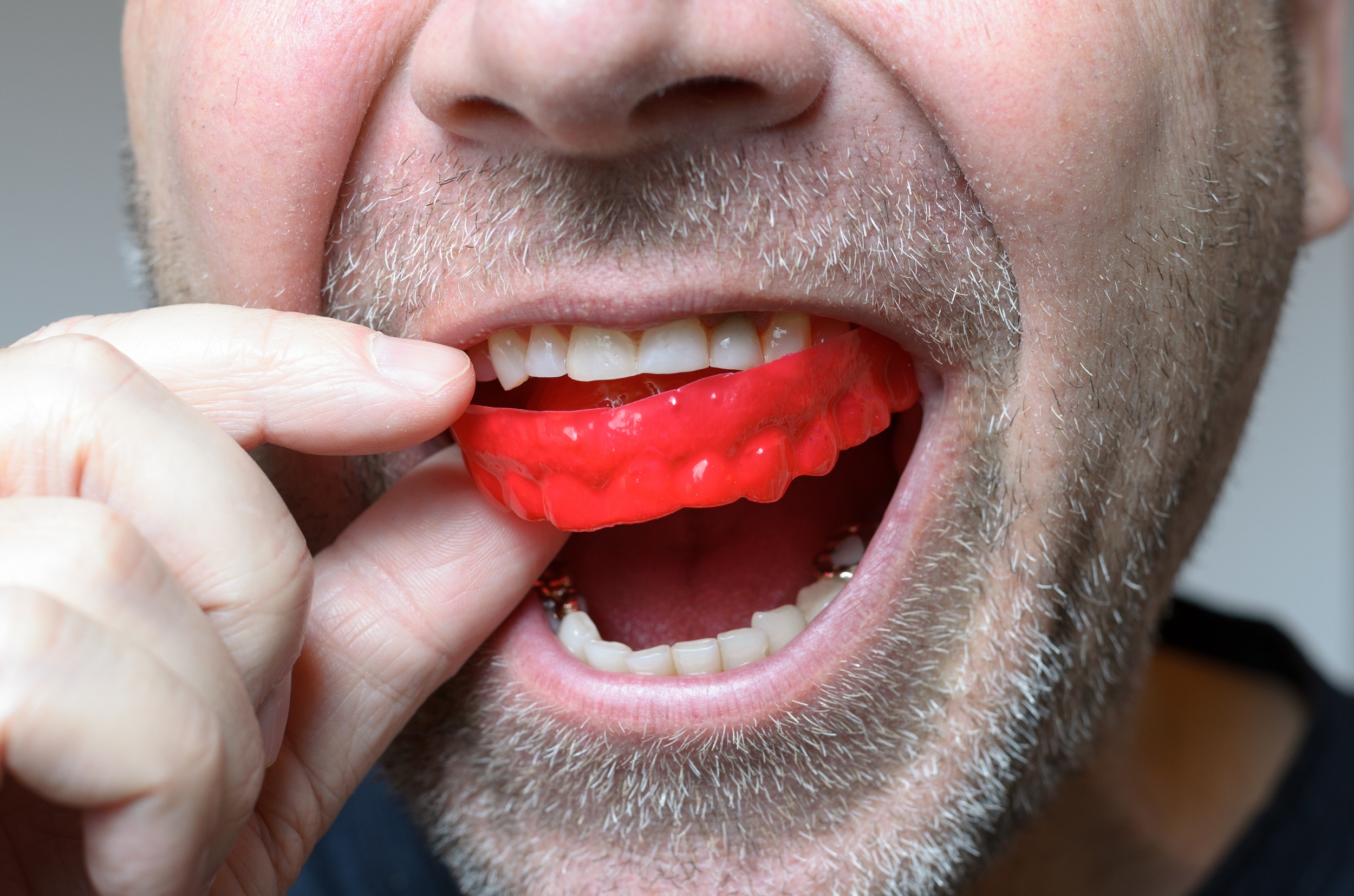Are you an athlete or is there a young athlete in your family? Mouthguards protect your mouth and teeth from injury. They are — or should be — mandatory protective equipment for sports with any risk of physical contact. But not just any mouthguard. Only a properly fitting mouthguard will protect your mouth and teeth from injury. Here are four things to watch for to figure out if your mouthguard or your child’s mouthguard fits properly.
1. Can you breathe and talk normally?
Try wearing your mouthguard while going about your normal routines for half a day. Yeah, it’ll be uncomfortable and feel really strange, but it’s a great way of finding out if your mouthguard is fitting properly. If you can talk to someone relatively normally, your mouthguard fits. If you can take a sip of water easily, your mouthguard fits. If — and this is especially important — you can breathe normally, your mouthguard fits. If you can’t talk, drink and breathe naturally while wearing your mouthguard, it’s not fitting properly. Go see a dentist in Saskatoon and ask to be provided with a mouthguard that fits properly.
2. Does it stay in place on its own?
Put your mouthguard in your mouth, then relax your jaw and open your mouth. Does your mouthguard drop off your upper teeth all on its own due to gravity? Tension and suction should keep the mouthguard in place even when you relax your jaw. If you have to keep your jaw tense or your teeth clenched to keep your mouthguard in place, it doesn’t fit properly and will expose your jaw to unnecessary strain and tension. If that mouthguard slips out of place on its own or with the slightest touch of your tongue, it’s too loose. It should stay in place without slipping around to be a distraction or moving in your mouth as you play your sport.
3. What does it cover?
Have you ever given any thought to what teeth your mouthguard should cover? Your instincts might be that the mouthguard should completely cover all your teeth, but that’s actually not true. If your mouthguard covers every molar completely all the way back to your last molar, there’s a risk that it’ll trigger your gag reflex when you wear it. If your mouthguard completely covers every molar, it doesn’t fit properly. A properly fitting mouthguard will end roughly wear your last two molars meet so that it doesn’t touch too much of your soft palate to trigger your gag reflex and potentially cause you to choke.
4. What else does it cover?
We talked about how far the mouthguard should extend back into your mouth, but it’s also important how high or deep the mouthguard is. There’s a trade-off to be had, of course, between protection and comfort but it’s important that all the essentials are protected. When you’re wearing your mouthguard, it should not leave any portion of your visible teeth exposed. You shouldn’t be able to see any teeth or roots of teeth between the edge of your mouthguard and the line of your gums. Those root tissues need protection from injury just like the biting surfaces of your teeth. Having said that, the mouthguard doesn’t need to cover the entire surface of your gums all the way up into your lips. A mouthguard that extends that high will be extremely uncomfortable and you’ll be tempted not to wear it. A properly fitting mouthguard covers all the surfaces of your teeth and a portion of your gums to keep you safe.
If you don’t have a mouthguard or your mouthguard isn’t fitting properly, your teeth aren’t safe. Oral injuries are the most common type of injury sustained by kids and adults in sports, but many of them can be prevented as simply as by wearing well-designed and well-maintained mouthguards in Saskatoon that fit properly. Get in touch with a dentist to get yours before your next match or game.

